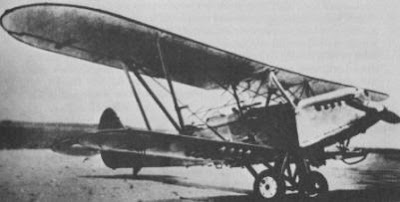The Polikarpov R-5 was a massively-produced light bomber in service with the Soviet Air Force. It performed its first flight in 1928 and it was introduced into service in 1930. It was a sturdy reliable aircraft, which was the result of the communist government effort to catch up with Great Britain and the United States in aviation development. The State-run factory Polikarpov built a large number of the R-5, more than 6,000 units, in several versions. A torpedo bomber variant was also produced; the R-5T, in 1932.
It was used in combat for the first time in the Spanish Civil War (1936-1939) in support of the Spanish socialist government. During the first three years of World War II, it also saw combat action but in the reconnaissance role. It was also employed in the Far East against the Japanese forces, especially the ground-attack version, the R-5Sh, which was armed with seven machine guns and half a ton bombload. By mid 1944, it had been withdrawn from service.
Technical Characteristics
The Polikarpov R-5 was a two-seat biplane. Its fuselage was built mostly of wood, while its upper and lower wings were joined by interplane struts on each side. The aircraft was powered by a Mikulin M-17, V12 engine, which delivered 680 HP. Its maximum speed was 145 mph (237 km/h). The bomb-load was 250 kg (525 lb).
Specifications
Type: biplane bomber
Length: 34 ft 9 in (10.5 m)
Wingspan: 51 ft (15.5 m)
Height: 10 ft 8 in (3.25 m)
Combat Weight: 3,250 kg
Below, the Polikarpov R-5 bomber at an airbase in Russia



